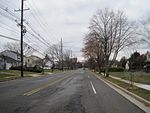Piscataway () is a township in Middlesex County, in the U.S. state of New Jersey. It is a suburb of the New York metropolitan area, in the Raritan Valley. As of the 2020 United States census, the township's population was 60,804, an increase of 4,760 (+8.5%) from the 2010 census count of 56,044, which in turn reflected an increase of 5,562 (+11.0%) from 50,482 at the 2000 census.The name may be derived from the area's earliest European settlers who came from near the Piscataqua River, a landmark defining the coastal border between New Hampshire and Maine, whose name derives from peske (branch) and tegwe (tidal river), or alternatively from pisgeu (meaning "dark night") and awa ("place of") or from a Lenape language word meaning "great deer". The area was appropriated in 1666 by Quakers and Baptists who had left the Puritan colony in New Hampshire.Piscataway Township was formed on December 18, 1666, and officially incorporated by an act of the New Jersey Legislature on February 21, 1798, as part of the state's initial group of 104 townships. The community, the fifth-oldest municipality in New Jersey, has grown from Native American territory, through a colonial period and is one of the links in the earliest settlement of the Atlantic Ocean seacoast that ultimately led to the formation of the United States. Over the years, portions of Piscataway were taken to form Raritan Township (March 17, 1870, now Edison), Dunellen (October 28, 1887), Middlesex (April 9, 1913) and South Plainfield (March 10, 1926).Rutgers University's main campus spills into the township. SHI Stadium, home field for the Rutgers Scarlet Knights football team, is in Piscataway as well as part of the Robert Wood Johnson Medical School.








